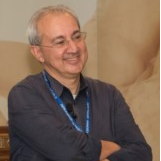Experimental Ideas for Novel FEL Facilities Based on Plasma Acceleration
A special issue of Condensed Matter (ISSN 2410-3896). This special issue belongs to the section "Spectroscopy and Imaging in Condensed Matter".
Deadline for manuscript submissions: closed (17 February 2023) | Viewed by 10331
Special Issue Editors
Interests: high brightness photoinjectors; free-electron lasers; advanced acceleration concepts; plasma accelerators
2. CNR - Istituto Struttura della Materia and Elettra-Sincrotrone Trieste, Basovizza Area Science Park, 34149 Trieste, Italy
3. RICMASS - Rome International Center for Materials Science – Superstripes, Via dei Sabelli 119A, 00185 Roma, Italy
Interests: correlation phenomena in X-ray absorption spectroscopy; X-ray absorption in elements of geophysical interest; dust and aerosol characterization; ultra-trace detection for indoor and outdoor environmental studies
Special Issues, Collections and Topics in MDPI journals
Interests: atomic and molecular physics; electron spectroscopy; time-resolved spectroscopy; XUV and X-ray instrumentation; synchrotron and FEL; research infrastructures
Interests: free electron lasers; X-ray absorption spectroscopy; protein crystallography; coherent imaging; density functional theory; liquid jet sample delivery
Special Issue Information
Dear Colleagues,
This Special Issue is devoted to user applications of new-generation high-brilliance radiation sources. It was influenced by the "EuPRAXIA@SPARC_LAB” User Workshop held in Frascati on 14-15 October 2021, an event dedicated to the new FEL facility based on plasma acceleration. EuPRAXIA is the first European project that aims to develop a dedicated particle accelerator research infrastructure based on novel plasma acceleration concepts and laser technology (http://www.eupraxia-project.eu/).
Contributions to the Special Issue We, therefore, invite you to contribute research focused on targeting soft X-rays, VUV and XUV radiation ranges and the predicted properties of the EUPRAXIA FEL facility. Manuscripts that combine high-power laser and HHG sources in multidimensional spectroscopy investigations will also be considered.
Prof. Dr. Massimo Ferrario
Prof. Dr. Augusto Marcelli
Dr. Marcello Coreno
Prof. Dr. Francesco Stellato
Guest Editors
Manuscript Submission Information
Manuscripts should be submitted online at www.mdpi.com by registering and logging in to this website. Once you are registered, click here to go to the submission form. Manuscripts can be submitted until the deadline. All submissions that pass pre-check are peer-reviewed. Accepted papers will be published continuously in the journal (as soon as accepted) and will be listed together on the special issue website. Research articles, review articles as well as short communications are invited. For planned papers, a title and short abstract (about 100 words) can be sent to the Editorial Office for announcement on this website.
Submitted manuscripts should not have been published previously, nor be under consideration for publication elsewhere (except conference proceedings papers). All manuscripts are thoroughly refereed through a single-blind peer-review process. A guide for authors and other relevant information for submission of manuscripts is available on the Instructions for Authors page. Condensed Matter is an international peer-reviewed open access quarterly journal published by MDPI.
Please visit the Instructions for Authors page before submitting a manuscript. The Article Processing Charge (APC) for publication in this open access journal is 1600 CHF (Swiss Francs). Submitted papers should be well formatted and use good English. Authors may use MDPI's English editing service prior to publication or during author revisions.
Keywords
- FEL
- plasma acceleration
- photon sources
- coherent imaging
- X-ray spectroscopy
- time-resolved spectroscopy
- Raman spectroscopy
- HHG sources
- photo-fragmentation








